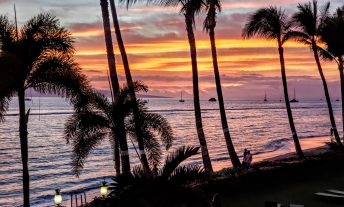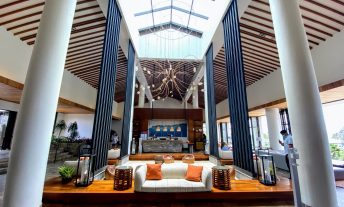You can now redeem Hilton points for Lyft rides
Signing up for credit cards through partner links earns us a commission. Terms apply to the offers listed on this page. Here’s our full advertising policy: How we make money.
Update: One or more card offers in this post are no longer available. Check our Hot Deals for the latest offers.
Have a stash of Hilton points you’re looking to use? Good news! You can now use your Hilton points for Lyft ride credits.
Through HiltonHonorsLyft.com, you can select a fixed amount of Hilton points to exchange for Lyft credits in increments of $10 to $100. The credits will be deposited into your Lyft account, and when you take your next ride, you can spend your credits to help offset the cost of your trip.
It’s as easy as that.
For example, you can exchange 4,500 Hilton points for a $10 Lyft credit, 11,250 points for a $25 credit, and so on and so forth.

Once you choose the value of the Lyft credit you want, you’ll be asked which account you’d like to use — meaning it’s possible to pass along the credits to a friend or family member if you don’t have a use for them yourself.
The Points Guy values Hilton points at 0.6 cents apiece, but at these rates, you’ll only be getting 0.2 cents per point. So, it’s likely better to use your points on Hilton stays rather than Lyft. That said, having options is always nice, and this is an easy way to burn a few thousand points if you don’t have a need for them otherwise.
Don’t forget, it’s also possible to earn Hilton points for Lyft rides when you link your accounts. You’ll earn 3 Hilton points per $1 spent on Lyft rides (economy, luxury and extra seats) and 2 points per $1 spent on shared Lyft rides. Be sure to use a card that earns a bonus on ride-share spending, like the Chase Sapphire Preferred® Card or Chase Sapphire Reserve®, which earn 2X and 3X Chase Ultimate Rewards points, respectively, on travel purchases including Lyft.
More ways to earn Hilton points
If you’re looking to rack up more Hilton points there are lots of ways to earn them, including earning the welcome offers on any one of the following Hilton cards:
- Hilton Honors American Express Card – Earn 80,000 Hilton Honors bonus points after you spend $1,000 in purchases on the card in the first three months of card membership. Terms Apply.
- Hilton Honors American Express Surpass® Card – Earn 130,000 Hilton Honors bonus points after you spend $2,000 in purchases on the card in the first three months of card membership. Terms Apply.
- Hilton Honors American Express Aspire Card – 150,000 Hilton points after spending $4,000 on purchases within the first three months of account opening. Terms Apply.
- The Hilton Honors American Express Business Card – Earn 130,000 Hilton Honors bonus points after you spend $3,000 in purchases on the card in the first three months of card membership. Plus, you can earn up to $130 in statement credits on eligible purchases made on the card at any of the Hilton family hotels in the first 12 months of Membership. Offer expires 7/6/2022. Terms Apply.
The information for the Hilton Aspire card and Hilton Surpass card has been collected independently by Million Mile Secrets. The card details on this page have not been reviewed or provided by the card issuer.
For more ideas, be sure to check out our guide to earning Hilton points. And to stay up-to-date on the latest in news and deals, please subscribe to the Million Mile Secrets email newsletter.
Featured image by Roman Tiraspolsky/Shutterstock.
Editorial Note: We're the Million Mile Secrets team. And we're proud of our content, opinions and analysis, and of our reader's comments. These haven’t been reviewed, approved or endorsed by any of the airlines, hotels, or credit card issuers which we often write about. And that’s just how we like it! :)






Join the Discussion!